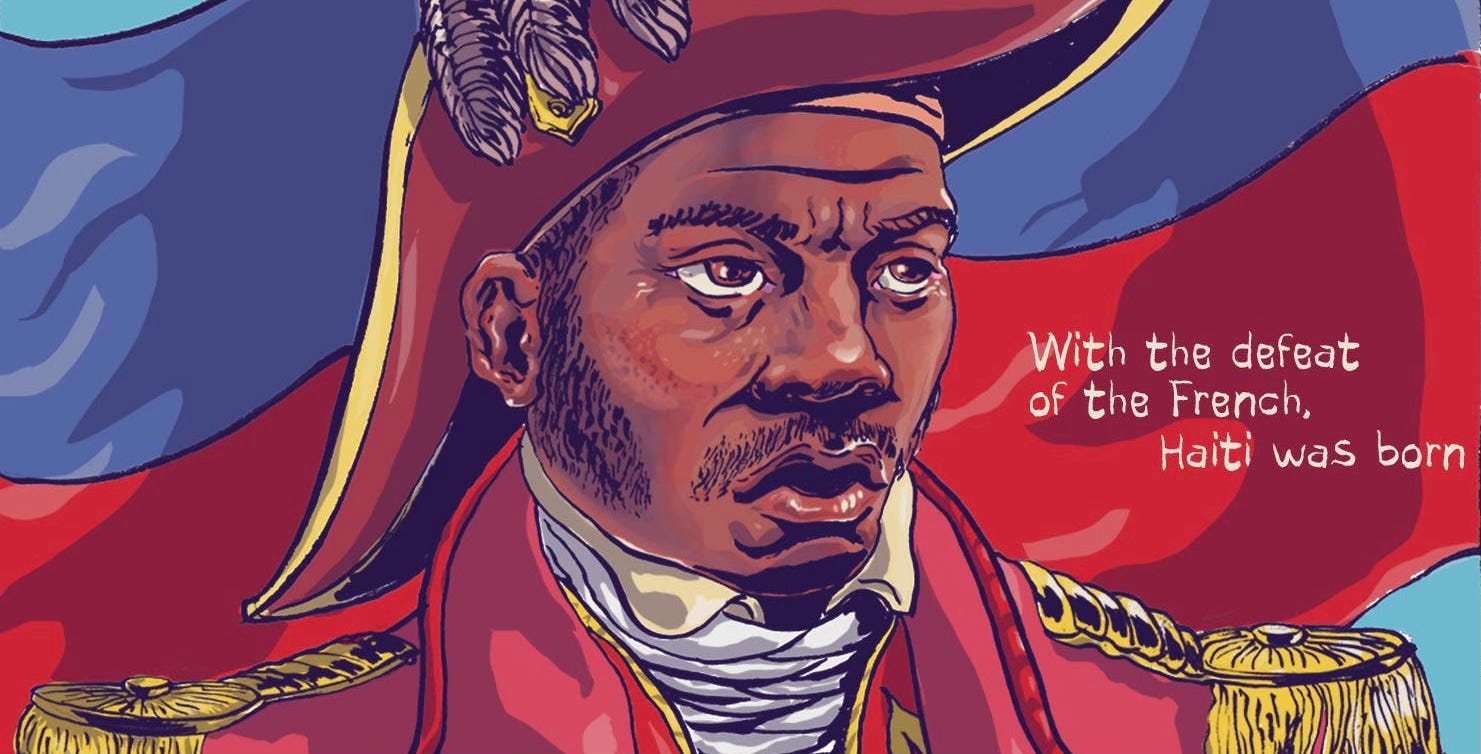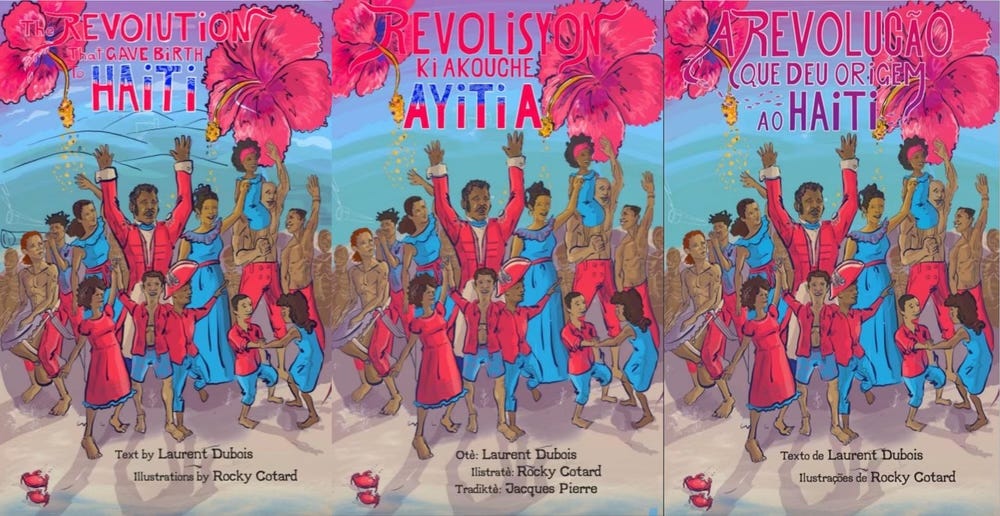Five Excellent Resources for Teaching or Learning about the Haitian Revolution
📍Subscribers to the Liberating Narratives newsletter can read this essay on the site.
📍 My Medium Friends can read this essay on Medium.
I appreciate all the thoughtful feedback I received on my previous post on the causes of the Haitian Revolution. A few folks asked where the images came from, and I want to highlight that they all come from Rocky Cotard and Laurent Dubois’ “The Slave Revolution That Gave Birth to Haiti.” You can read the original graphic history on the Nibor download PDF versions in English, Haitian Creole, or Portuguese. That question also reminded me that more folks should be aware of the significance of the Haitian Revolution. In this post, I’ll highlight five excellent resources for teaching or learning about the Haitian Revolution.
Laurent Dubois’ Avengers of the New World: The Story of the Haitian Revolution is the best narrative history of the revolution. He balances the complexities of an academic monograph with the accessibility of a popular narrative. Dubois brings to life all the inspiring individuals who collectively abolished slavery in eighteenth-century France’s wealthiest colony and won their political independence.
To get a taste of Dubois’ storytelling and the revolution’s significance, check out “Why Haiti Should Be at the Centre of the Age of Revolution.” Most people are familiar with the significance of the American and French revolutions, but Haiti isn’t usually the first revolution people think about. Not only was it the only successful modern revolt by enslaved people, it was also the most radical of the Atlantic Revolutions. It was more than just a political revolution; it was also an economic and social revolution. Dubois explains how the Haitian Revolution “was both a local and a global event, a true world-historical moment in ways that are increasingly acknowledged today.”
Part of the reason I love using Rocky Cotard’s illustrations is that he’s Haitian-American. He regularly returns to Haiti and describes his art as bridging both cultures. We must pay attention to who produced the illustrations of the Haitian Revolution. In “All the Devils Are Here,”Marlene Daut discusses how many artists misrepresented the Haitian Revolution. White Europeans produced many historical images of the Haitian Revolution. They regularly depicted Haitian violence but rarely provided context or depicted White European violence. These images perpetuated a stereotype of Haitians as inherently violent and obscured the long history of White European violence against enslaved Africans.
Daut also commissioned a series of articles on the 220th anniversary of Haitian independence for Public Books. Some leading scholars on Haiti contributed essays exploring different aspects and legacies of the revolution. All the essays are engaging and explore how the Haitian Revolution is still relevant today. Leslie Alexander’s “The U.S. Has Never Forgiven Haiti” is especially important for Americans. She discusses how Haiti inspired abolitionists and African-Americans. American governments during the nineteenth and early twentieth centuries resented Haitian independence and undermined the country’s viability.

Despite Haitians winning their independence from France in 1804, many French governments did not let go of Haiti. The French refused to recognize Haiti’s independence or use the new name for the country; the French persisted in referring to Haiti as Saint-Domingue. In 1825, the French threatened to reoccupy Haiti unless Haitians paid a massive indemnity of 150 million francs. France demanded this amount in exchange for recognition of independence. Even though the Haitian government couldn’t afford to pay the indemnity, it felt compelled to take out loans. Economists estimate that the debt on those loans was not paid off until 1947. Marlene Daut’s “When France Extorted Haiti: The Greatest Heist in History” tells the story of the indemnity. The New York Times also published “Haiti’s Lost Billions: The Ransom.”Popular media often describes Haiti as the poorest country in the Western Hemisphere. We can only understand the reasons for that misleading claim when we understand what France did to Haiti.
If you want to learn more about the Haitian Revolution, I’ve written extensively about Haiti on Liberating Narratives. “‘We Have Dared to be Free’: Teaching the Haitian Revolution” is a good starting point.
Liberating Narratives is written by Bram Hubbell. If you’ve valued reading this post, please consider becoming a paid subscriber. Your financial contribution supports independent, advertising-free materials for teachers. Thank you, friends.
Feel free to forward this message to a friend or colleague and tell them where they can subscribe. (Hint: it's here.)
If you have any comments or suggestions, please share them with me or post them below. I can also be reached on Bluesky, Threads, Facebook, Instagram, Mastodon, and email.




